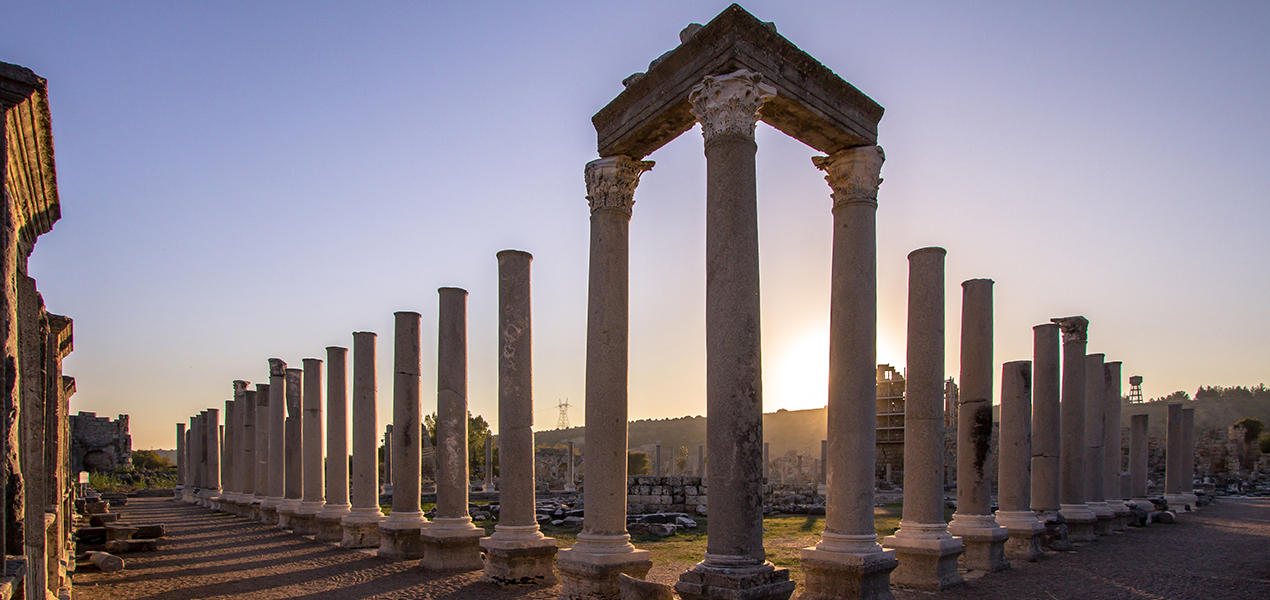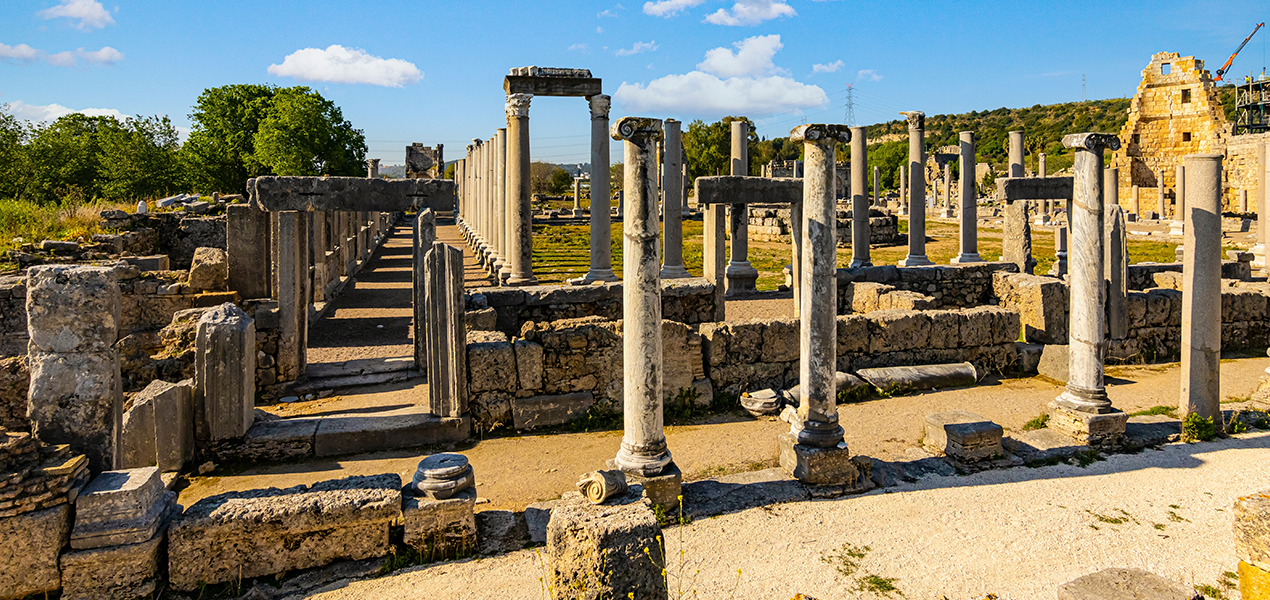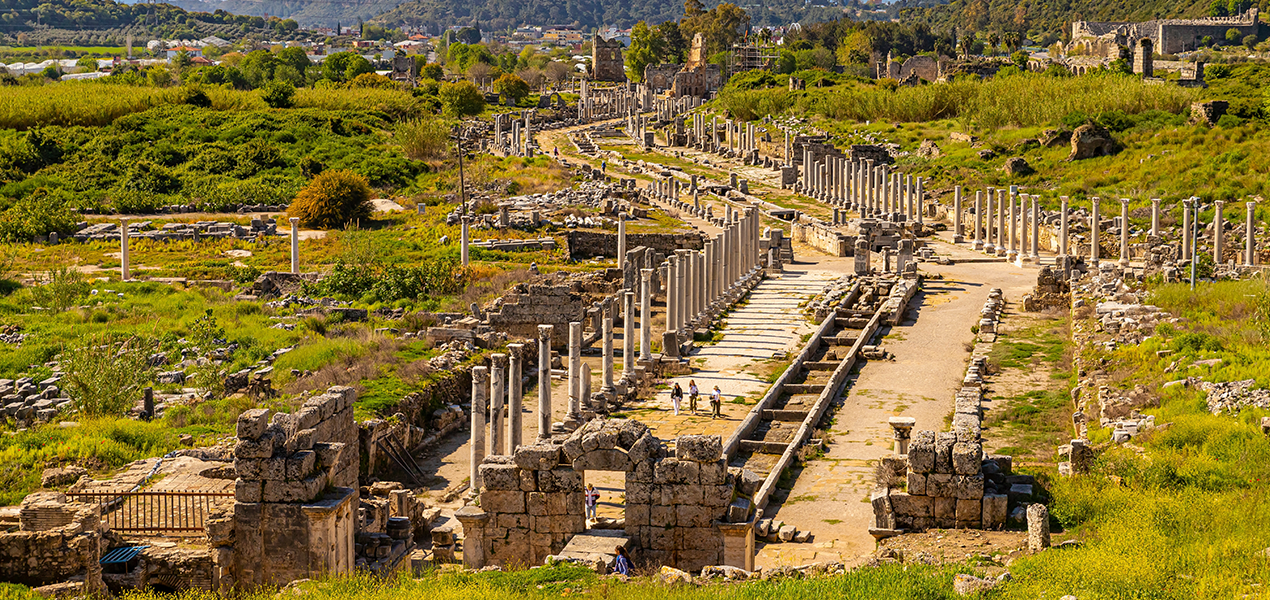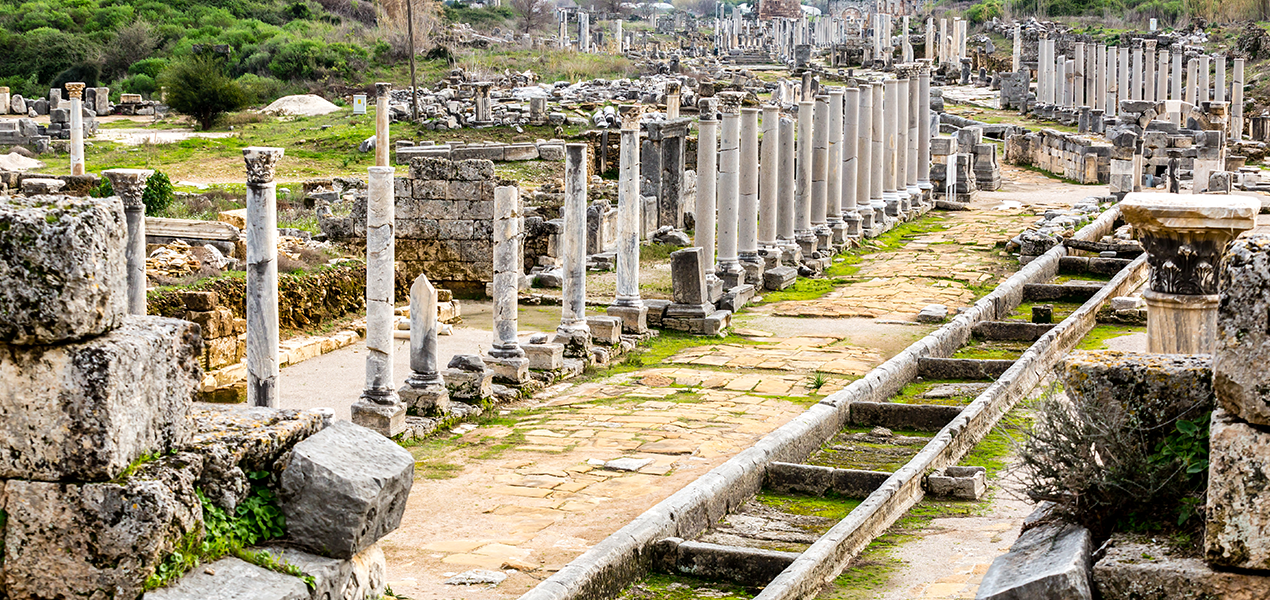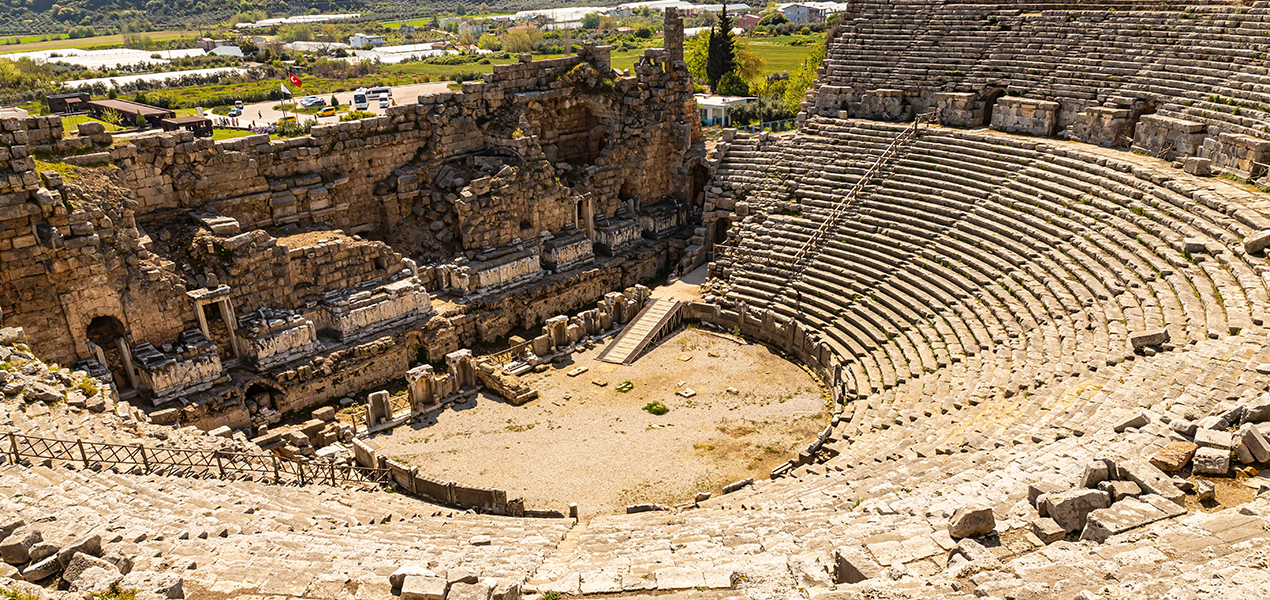A Mystic Journey To The Ancient City Of Perge
Perge, known as "Parha" during the Hittite Period, is an ancient city that once served as the capital of the Pamphylia region.
Located 17 kilometres east of Antalya in Aksu, the Ancient City of Perge is a captivating site that you can visit during your holiday in Antalya.
The artifacts found in the Ancient City of Perge are now exhibited in the Antalya Museum, which has earned the reputation of being the most important sculpture museum. The artifacts from the well-preserved theatre of the Ancient City of Perge are displayed in the Perge Theatre Hall of the Antalya Museum.
Ancient Theatre
Estimated to have a seating capacity of approximately 14,000 people, Perge Ancient Theatre consists of three sections: the stage, the opera and seating areas for the audience. The protected mythological paintings can be found in the most remarkable part of the ancient theatre, the stage section. The reliefs depicting the life of Dionysus- God of Wine are particularly noteworthy and should be seen during the visit.
Stadium
The stadium, which is the other foundation of the city, is one of the best-preserved ancient stadiums in the world that dates back to ancient times. With a seating capacity of 12,000 spectators the stadium hosted various events, festivals, and religious ceremonies throughout history.
The city of sculptors
Perge, also known as the city of sculptors, is famous for its unique style of sculptures. Many exceptional and rare sculptures such as the “Statue of Emperor Caracalla”, which is claimed to be the only one of its kind in the world and preserved in its entirety to date, and the unique "Belly Dancer Statue" masterfully crafted using two different marbles in the artistic technique of Perge, are exhibited in special halls in the Antalya Museum.
Other structures of Perge
During your visit to the Ancient City of Perge, other cultural structures reflecting the grandeur of the ancient city that you will come across include the city's commercial centre the Agora, the Acropolis, the Hellenistic towers and the Hellenistic Gate, the monumental fountains, the Perge South Baths, the Septimius Severus Fountain (nymphaeum), located at the foot of the Acropolis and the colonnaded streets that stretch along the settlement. The Septimius Severus Fountain was built during the Severan period to meet the growing water demand of the city.
The Hellenistic Gate, which is the oldest and largest gate of the ancient city, and the Roman Gate, which is estimated to have been built towards the end of the 2nd century AD due to the expansion of the ancient city to the south, are among the magnificent structures of the city.
The Septimius Severus Square, situated between the Hellenistic Gate and the Roman Gate; Hadrian's Gate built during the reign of Emperor Hadrian located at the starting point of the colonnaded main street; the remarkably well-preserved Ancient Roman Baths and the main Colonnaded Street that distinguish Perge from other ancient cities take you on a captivating historical journey in this ancient city.


